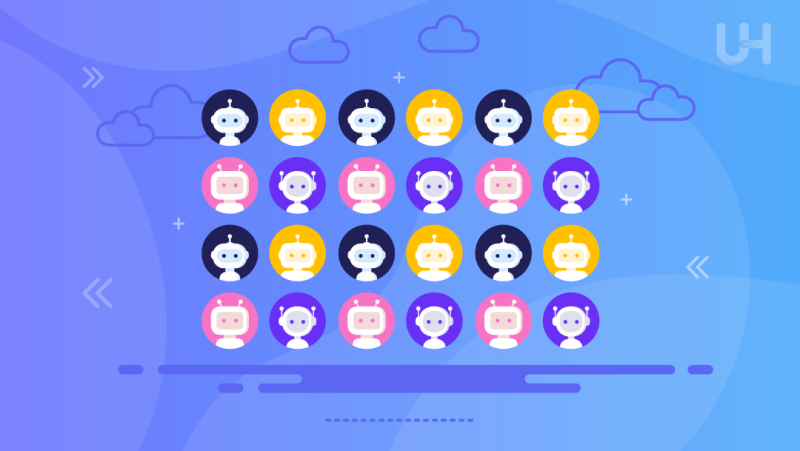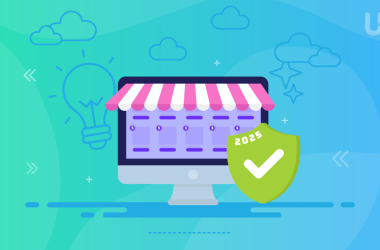The demand to improve online traffic has fueled the evolution of bots. Websites are using notorious software agents to generate fake traffic. This has consequently led to the increasing rise of bot farms. Observations and studies have indicated an increase in the prevalence of bot farms.
In this article, we try to delineate a concept of what bot farms are, how they function, and also the far-reaching impact that such technology could have.
What is a Bot Farm?
Bot farms, otherwise known as botnets or simply bots, are networks of automated programs designed and built to execute repetitive tasks at a scale way beyond human capability. These can vary altogether—from just a few bots to millions—depending on why they are being used and what resources are available with the operators. Usually, bot farms are controlled by one principal entity that might cause such bots to do specific things together.
Probably the most defining characterization of a bot farm would be the ability to perform tasks autonomously and extremely fast. This might include things like disseminating any information, including misinformation, on social media sites, artificially inflating website traffic, also conducting cyber-attacks in the form of Distributed Denial of Service, or automatizing clicks on advertisements for fraudulent revenue generation.
How Do Bot Farms Work?
The architecture and operational methods for bot farms would have to be analyzed to understand how they work. All in all, the main constituents forming a bot farm are three: bots, the C&C server, and the communications protocol between them.
- Bots: These are the individual programs performing the allotted tasks. They can be installed on infected computers, smartphones, IoT devices, or high performance dedicated servers. Most of the time, these devices are hijacked without the knowledge of their owners using malware attacks.
- C&C Server: This server will allow the bot farm’s operator to issue commands and gather feedback from bots. The role of the C&C server will be very important in large-scale and complex operations and in keeping the bots running.
- Communication Protocol: The communication between bots and the C&C server is implemented through different protocols. Most of them are encrypted, allowing their activities to bypass security measures. Communication may be continuous or intermittent, depending on the requirements of the task and also how far it has to stay under the radar of security measures.
Common Uses of Bot Farms

Bot farms are versatile and could be run for a myriad of different reasons, both legitimate and malicious. Here are some of the most common applications:
However, the most common use of bot farms is manipulating social media, resulting in a social media crisis. Bots may be designed to create fake accounts quickly and provide likes, sharing, and comments to amplify a message or drown out the opposing view. Such manipulation could be used during a marketing campaign, political propaganda, or to harm a competitor’s reputation. For those concerned about their online presence, consider Anonymous VPS Hosting for enhanced security.
DDoS Attacks
In a Distributed Denial of Service attack, the workings of a bot farm are seen, flooding the target server with requests until it crashes or becomes unresponsive. Attacks of this nature can be conducted for business disruption, ransom demands, or just to operate as a smokescreen for other cyber-attacks. Implement cloud security best practices to stay a step ahead.
Ad Fraud
Bot farms can generate fraudulent clicks on adverts, fooling those placing the adverts into continuing to spend money on volume that does not exist. This fraud can take a significant amount of marketing budget, and it would also be tough for businesses to know precisely how their adverts work.
Data Scraping
Data scraping refers to extracting data from websites through bots designed for the same purpose. This might be done to harvest vast amounts of information for competitive analysis, market research, or even ill purposes such as identity theft and spamming, showing its valid and illicit uses. For ethical applications, techniques like web scraping without getting blocked are essential to ensure uninterrupted access to public data while respecting site terms and avoiding detection.
Protect Your Site from Bot Farms and DDoS Attacks!
Concerned about bot farms and their damaging DDoS attacks on your business? Protect your online presence with UltaHost’s DDoS Protected VPS. Our reliable VPS solutions ensure your website remains secure and also operational, even under the threat of bot farms.
Impact of Bot Farms
The impact of bot farms is profound and multi-dimensional, affecting not just individuals and businesses but also society. Among the severe effects are:
Economic Impact
It may cause massive economic damage. The cost of mitigating DDOS attacks, the loss of revenue by ad fraud, and damage to reputation by social media manipulation can be huge for businesses. Furthermore, cybersecurity measures to detect and prevent bot farm activities have a significant resource cost.
Bot farms can sway public opinion on elections and other matters by forwarding misinformation and propaganda. They can distort public perception by creating an impression of overwhelming support or rejection and thereby undermine democratic processes. This kind of manipulation further fuels polarization and mistrust of the media and political institutions.
Privacy and Security
The proliferation of bot farms poses a serious threat to data privacy and data security. Advanced bot malware can easily infect personal devices, which may be assimilated into a bot farm without the owner’s knowledge. This could potentially involve sensitive data and further exposure to other types of cyber threats. Understanding how to protect yourself from identity theft is crucial, as bot farms can exploit personal information for malicious purposes.
Erosion of Trust
Widespread use of bots can undercut confidence in online platforms. Constant second-guessing about where the likes, shares, and comments are coming from reduces users’ perceptions of authenticity in online interactions. Moreover, this erosion of trust might offer a reason for users to engage less and limit the effectiveness of digital channels.
Combating Bot Farms
Given the high impact of bot farms, fighting them has been at the forefront of priorities for cybersecurity professionals, platform providers, and regulators. Here are some strategies employed to counteract bot farm activities:
Advanced Detection Technologies
Cybersecurity companies are, therefore, pushing boundaries to develop state-of-the-art detection technologies that involve machine learning and behavior analysis to identify bot activities. This kind of progress allows for timely identification and subsequently mitigates bot traffic using patterns unrelated to human behavior, hence better defending against evolving cyber threats.
More Secure Mechanisms for Authentication
The strengthening of security frameworks involves the deployment of a robust authentication mechanism like multi-factor authentication and CAPTCHA. All of these enhancements strengthen the platforms by creating a virtually very formidable barrier to automated scripts, forcing user actions to involve a human’s activity, thus protecting against different unauthorized accesses or malicious activities.
Legal and Regulatory Measures
Governments and regulatory bodies increasingly realize bot farms’ impending danger and, therefore, frame laws to keep them at bay. These may include penalties against individuals and organizations involved in running bot farms, as well as forced regulations on the platforms themselves to take proactive measures against bot activity.
User Awareness and Education
Therefore, users could be educated on reducing the number of devices that become part of bot farms by being aware of bot activity signs and essential cybersecurity practices. Awareness campaigns are significant in ensuring that users keep software updated and avoid suspicious links and downloads.
Conclusion
Bot farms are among the most dangerous challenges existing within any digital landscape. Viewed from massive-scaled task automation, bot farms threaten economic stability, political integrity, and personal privacy. Understanding exactly what a bot farm is and how it works is a first step toward fighting its dire consequences. Lastly, advanced technologies of machine detection, improvement in authentication mechanisms, proper legislation, and education for users will help minimize the effects of bot farms on our online ecosystems.
Bot farms and DDoS attacks are becoming increasingly common nowadays. Securing your website is more crucial than ever. Ensure your online presence remains safe and reliable with UltaHost’s Cloudflare Server, providing top-notch protection and performance.
FAQ
Are bot farms always illegal?
Yes, bot farms are generally illegal. While automating tasks or creating individual bots is not illegal, operating bot farms typically involves activities that violate the law.
How can I tell if my device is part of a bot farm?
Signs include slow performance, data usage spikes, frequent crashes, and unknown programs. Regular anti-malware scans can help detect bots.
Why are bot farms difficult to detect?
They use encryption, mimic human behavior, and spread activity across devices, making detection challenging without advanced tools.
What industries are most affected by bot farms?
Online advertising, e-commerce, social media, and cybersecurity are most impacted by bot-driven fraud and attacks.
Can bot farms be completely eradicated?
Total eradication is tough, but advancements in cybersecurity, legal measures, and user awareness can significantly reduce their impact.








